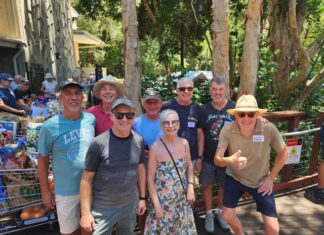Last Thursday I presented a motion to Noosa Council which received unanimous support.
The motion requests the chief executive officer to prepare a report on key issues related to the State Government’s Shark Control Program.
This report will address Noosa Council’s role and policy position on the use of shark nets, drumlines, and future trials.
When asked about the motivation behind this report, I explained that it stemmed from a two-year-long pursuit to gain clarity on the issue. Noosa Council currently has no policy regarding shark nets, drumlines, and trials, and no previous report on this matter has been presented to the Council.
Rather than shying away due to political implications, we must take a stand to balance various perspectives and manage community expectations, understanding the role we can play as a Council and a community.
Noosa Council does not manage shark nets or drumlines, which is the State Government’s responsibility. However, our role in advocacy is crucial.
By establishing a policy position, Noosa Council can play a significant role in supporting the Queensland Shark Control Program. This will enable Council to raise awareness about the program, advocate for its clear objectives to the state, and actively engage in state-led trials and initiatives to drive the assessment and adoption of evidence-based predatory species mitigation controls.
More importantly, it ensures that the program meets the needs and expectations of our community. For example:
• Continued advances in reporting: In its role as an advocate, Council supports the importance of transparent reporting from the State government regarding the effectiveness of shark nets and drumlines noting the annual catch data is provided on the State government website. It urges the consideration of further improvements to data reporting including which side of the nets marine species are caught on, to evaluate the shark control program’s efficacy and therefore minimise impacts on non-target species, and GIS mapping with interactive maps to improve clarity and provide a more comprehensive understanding of the data.
• Investigation of temporary net relocation during specific periods: Council requests the State government to provide advice and explore the feasibility of temporarily relocating shark nets at Laguna Bay to a location that may mitigate the risk of by-catch and/or whale issues during the upcoming whale migration period. It is noted that DAF Marine Animal Release Teams have just completed their annual training and whale alarms will be going on the nets during the next changeover.
• Continuous evaluation of technological advancements: Council advocates for the State government to continually evaluate the latest technological advancements in shark protection devices. The report should outline other possible recommendations on new technologies for consideration by the State government such as the Shark Safe Barriers model of electronic current deterrence developed in South Africa in terms of its cost-effectiveness and success rate.
The State Shark Control Program is expected to present recommendations in June/July 2024. These recommendations may include replacing lethal drumlines with SMART drumlines and phasing out shark meshing programs. Having a policy position would allow Noosa Council to respond effectively to these recommendations.
Previous responses from the state have indicated that the support of key stakeholders, including Noosa Council, is vital in determining where trials and transitions occur.
Conclusion: The use of shark nets and drumlines is a topic that divides our community.
While some believe these measures protect us from shark attacks, others argue there are better alternatives.
Although research suggests that nets may be effective, many scientists believe relying solely on them is misguided. Therefore, it is crucial to explore other options based on current technology and data.
Given the contentious nature of shark nets and drumlines, Noosa Council needs to take a clear policy position. By involving all stakeholders in the discussion and considering their perspectives, the council can make an informed decision that reflects the views of the wider community.
This will enable vouncil to guide the public, ocean users, and other stakeholders on this issue. A clear policy position will also allow council to work with the State Government toward implementing innovative solutions that balance public safety with the protection of marine ecosystems.







